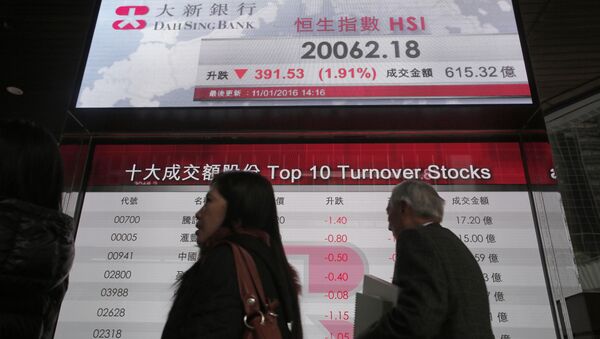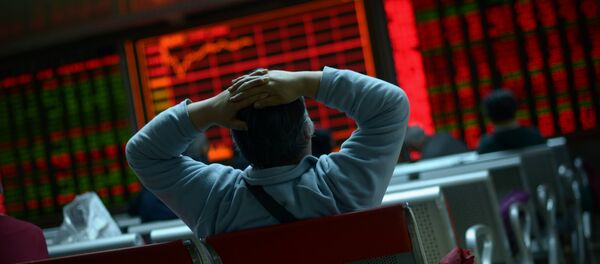Shares on the Shanghai stock exchange continued to fall on Monday, with the composite index falling over 5.3 percent, triggering a sell-off in other Asian markets and a decline in the price of oil.
Attempts by the Chinese central bank to guide the Yuan higher reversed by the end of the day in China, and stocks fell five percent. South Korean, Russian and Singaporean exchanges also fell, while European stocks remained stagnant. Traders blamed uncertainty in Chinese government decision-making for the uncertainty in markets.
"The Chinese situation sets the agenda right now in combination with oil prices. Before we see some meaningful transparency from China in its actions and some stability in the commodity markets, we are not going to get a stabilization," head of asset allocation at SEB told Reuters.
Hong Kong shares rose in the meanwhile. The imposition of capital controls in China led the rate of the yuan in Hong Kong to decline below mainland markets.
Apple Gets Bit
The past week's collapse had a particularly negative impact on technology and extraction companies, as economic decline in China threatens both the consumer and producer end of the company. Online retailer Amazon was among the biggest losers in the first week of the year, despite extremely bullish projections among both analysts and the press.
Oil Hit Hard
With fears of Chinese decline and dollar appreciation, oil continued to fall on Monday, with the price of the Brent benchmark declining nearly two percent.
Oil is hit with both a supply glut and a fall in demand according to Morgan Stanley, which projected a 25 percent decline in the price of oil.
"Oil, in my opinion, will stay around $29-30 per barrel. The situation remains frozen and negative, at least until the end of January," VTB24 analyst Oleg Dushin said.
Case for the Ruble?
Despite a falling oil prices, which Morgan Stanley projected going as low as $20, the rouble may see a turnaround according to an analyst Bloomberg deemed most accurate.
"We think we are approaching the bottom in USD-RUB and our bias is to look for opportunities to buy the ruble in the coming weeks," Dimitry Petrov of Nomura International told Bloomberg.
According to Petrov, the ruble may have found a bottom, as both private companies and households have reduced demand for the dollar. Companies also have less of a demand for dollars thanks to shrinking foreign debt payments.
The projection may include seasonal factors, as rubles allocated in the Russian federal budget are being used for external purchases, according to Sberbank CIB senior strategist Vladimir Pantyushin. Bank of America Merrill Lynch chief economist for Russia Vladimir Osakovsky predicted that the ruble would rise to the rate of 65 to the dollar at the end of 2016.






